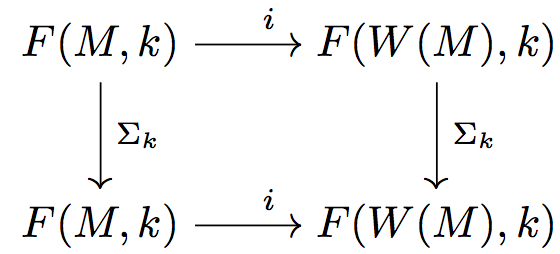Let $M$ be a $m$-dimensional compact manifold without boundary and $W(M)$ the non-compact $CW$-complex obtained by glueing $[0,1)\times (0,1)^{m-1}$ to $M$, identifying the boundary $\{0\}\times(0,1)^{m-1}$ with a hyperfurface in a chart of $M$ as in the following picture.
Let $\Sigma_k$ be the symmetric group on $k$-letters and $F(M,k)$ the $k$-th configuration space consisting of ordered $k$-tuples of distinct points in $M$. Let $\Sigma_k$ act by permuting the coordinates. There exist a $\Sigma_k$-equivariant inclusion $$ i: F(M,k)\longrightarrow F(W(M),k) $$ such that the diagram commutes
Question: Is $i$ a homotopy equivalence? Is $$i/\Sigma_k: F(M,k)/\Sigma_k\longrightarrow F(W(M),k)/\Sigma_k$$ a homotopy equivalence?


